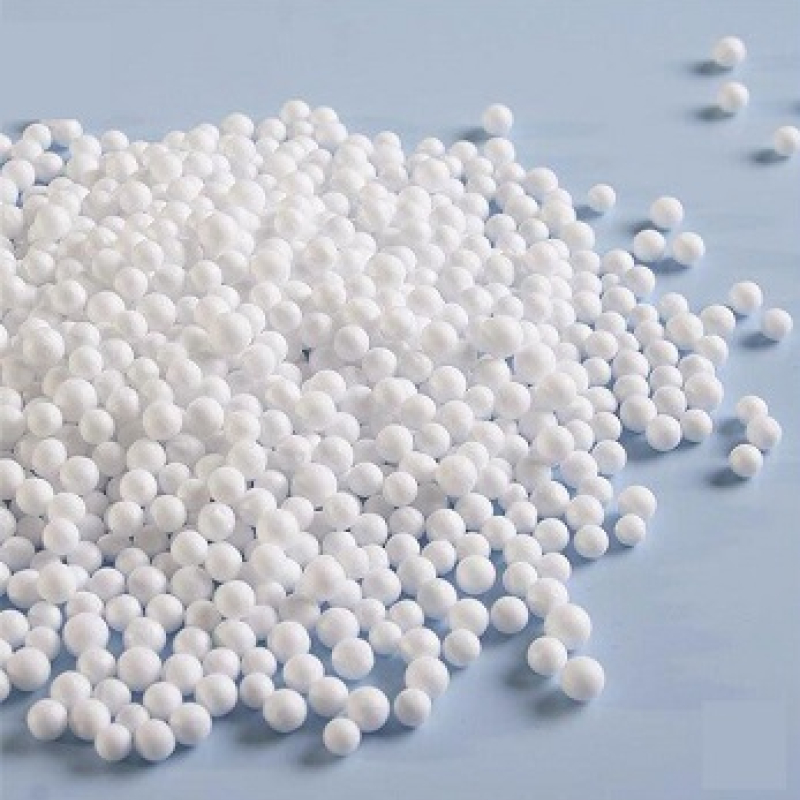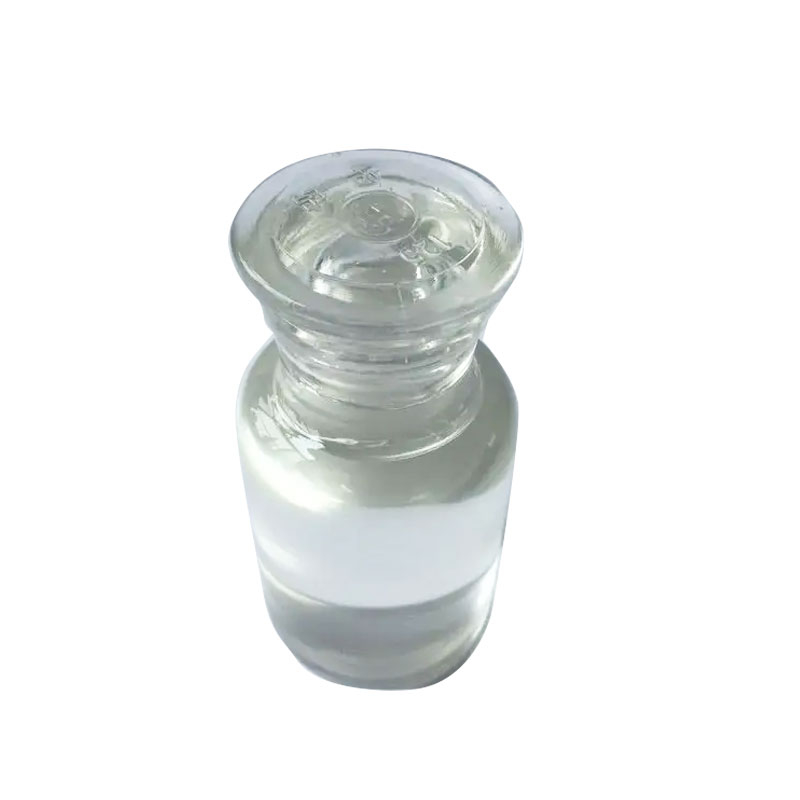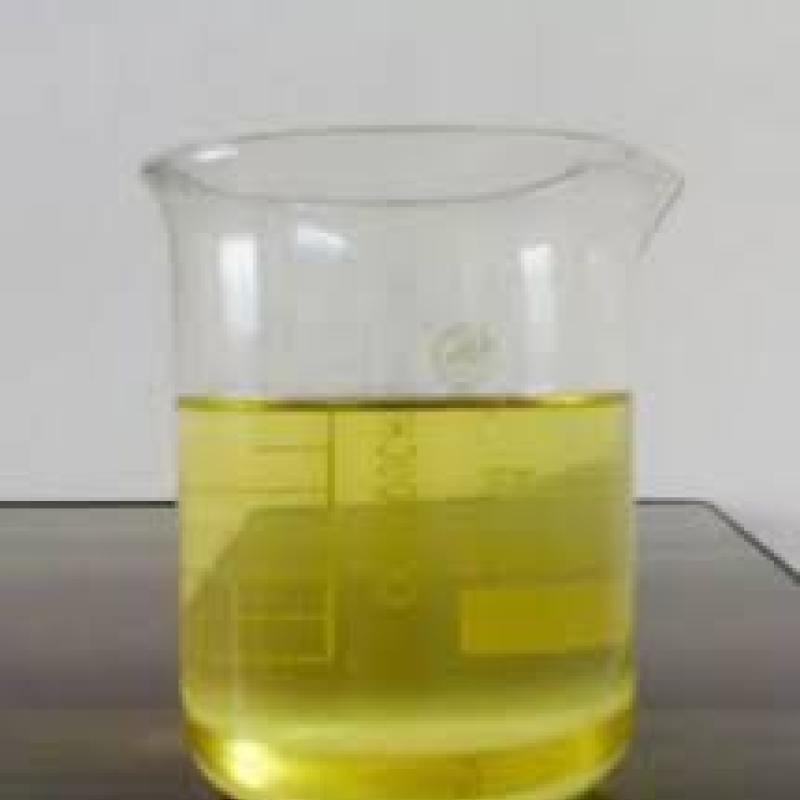Products Description of Polyisobutylene CAS#9003-27-4Calcium phosphate tribasic (C3161) is plant cell culture tested (0.2 mg/ml) and is appropriate for use in plant cell culture experiments. Calcium phosphate tribasic is utilized to engineer new biomaterials for applications such as bone grafts and fillers. Si-substituted hydroxyapatite (Si-HAp) nanopowder can be incorporated in biodegradable polymer composites or deposited on biocompatible surfaces similar to pure HAp nanopowder (cat. no. 677418).
Contacta ahora
Poly(oxy-1,2-ethanediyl), .Alpha.-Hydro-.Omega.-Hydroxy-, Mono-C12-14-Alkyl Ethers, Phosphates CAS#68511-37-5The molecular structure contains polyoxyethylene segments, hydroxyl groups, C12-14 alkyl ether and phosphate groups. This unique structure enables it to have multiple properties. It has good surface activity, can reduce the surface tension of the liquid, and play the role of emulsification, dispersion and wetting at the interface.
Contacta ahora
Products Description of Calcium gluconate CAS#299-28-5Calcium gluconate is the calcium salt of gluconic acid. It is a white crystalline or granular powder with a melting point of 201°C.
Contacta ahora
Products Description of CALCIUM SACCHARIN CAS#6485-34-3CALCIUM SACCHARIN is a white crystal or white crystalline powder with no or slight fragrance. It has a very strong sweet taste, and the sweetness of its dilute solution is about 500 times that of sucrose. Saccharin calcium can be dissolved in 1.5 ml of water and ethanol.CALCIUM SACCHARIN Chemical PropertiesOdorat 100.00?%.
Contacta ahora
Products Description of Ammonium phosphate dibasic CAS#7783-28-0Diammonium phosphate, also known as diammonium hydrogen phosphate (DAP), is a compound fertilizer containing two nutrients, nitrogen and phosphorus. Diammonium hydrogen phosphate is a high-concentration quick-acting fertilizer that is easily soluble in water and has less solids after dissolution. It is suitable for various crops and soils, especially for crops that prefer nitrogen and require phosphorus. It can be used as base fertilizer or topdressing, and deep application is recommended.
Contacta ahora
Products Description of Calcium hypochlorite CAS#7778-54-3The chemical formula of bleaching powder is CaCl2·Ca(ClO)2·2H2O. It is a white powdery substance. Its composition varies with the preparation conditions. It is generally a hydrated complex salt composed of calcium hypochlorite, calcium chloride and unreacted calcium hydroxide. Its active ingredient is calcium hypochlorite. Bleaching powder has strong oxidizing, corrosive and irritating properties. It can decompose when it comes into contact with water, ethanol or inorganic acid.
Contacta ahora
Products Description of Tributyl phosphate CAS#126-73-8Colorless, transparent liquid with pungent odor, flash point 193℃, boiling point 289℃ (101KPa), viscosity 3.5~12.2 centipoise, refractive index 1.4226 (20℃). It is miscible with common organic solvents and slightly soluble in water. The solubility of water in this product is 7% (25℃). But it will gradually hydrolyze as the temperature rises.
Contacta ahora
Products Description of Calcium chloride CAS#10048-52-4Anhydrous calcium chloride is a white porous frit or granule. It is easy to deliquesce. The melting point is 782℃, the density is 2.15g/cm3, the boiling point is higher than 1600℃, it is easily soluble in water and releases a lot of heat, and it is also soluble in ethanol and acetone. The most common is calcium chloride hexahydrate CaCl2·6H2O, colorless trigonal crystal, easy to deliquesce, bitter and salty taste, density 1.71g/cm3.
Contacta ahora
Products Description of Melamine-phosphate CAS#41583-09-9White powderMelamine-phosphate Chemical PropertiesMelting point 120 - 122°Cdensity 1.74storage temp. Refrigeratorsolubility DMSO (Slightly), Methanol (Slightly)form Solidcolor WhiteWater Solubility 3.9g/L at 20℃EPA Substance Registry System1,3,5-Triazine-2,4,6-triamine, phosphate (41583-09-9)Factory and Equipment ShowFast delivery timeInventory 2-3 working days New production 7-10 working days
Contacta ahora
Products Description of Calcium carbonate CAS#471-34-1Calcium carbonate occurs in nature as limestone in various forms, such as marble, chalk, and coral. It is probably the most widely-used raw material in the chemical industry. It has numerous applications, primarily to produce cement, mortars, plasters, refractories, and glass as building materials. It also is used to produce quicklime, hydrated lime and a number of calcium compounds. It is produced either as powdered or precipitated calcium carbonate. The latter consists of finer particles of greater purity and more uniform size.
Contacta ahora
Products Description of Ammonium dihydrogen phosphate CAS#7722-76-1Diammonium phosphate is a highly effective fertilizer widely used in vegetables, fruits, rice and wheat.Ammonium dihydrogen phosphate Chemical PropertiesMelting point 190 °C (dec.) (lit.)Boiling point 87.4 °Cdensity 1.02 g/mL at 20 °Cvapor pressure 0.066 hPa (125 °C)RTECS TC6587000storage temp. Inert atmosphere,Room Temperaturesolubility H2O: 0.1 M at 20 °C, clear, colorlessform SolidSpecific Gravity1.803color White or colorlessPH Range3.8 - 4.4PH3.
Contacta ahora
Products Description of 3,4-Dimethylpyrazole phosphate CAS#202842-98-63,4-Dimethyl-1H-pyrazole dihydrogen phosphate is a yellow or white crystalline powder substance, which can be used as a new type of nitrification inhibitor and can be used in solid and liquid fertilizers.3,4-Dimethylpyrazole phosphate Chemical PropertiesMelting point 167-169°Cstorage temp. Inert atmosphere,2-8°Csolubility Methanol (Slightly), Waterform Solidcolor White to Pale BeigeStability:HygroscopicFactory and Equipment ShowFast transport timeInventory 2-3 working days New man
Contacta ahora
Products Description of Calcium chloride CAS#10043-52-4Calcium chloride, CaC12, is colorless deliquescent solid that is soluble in water and ethanol. It is formed from the reaction of calcium carbonate and hydrochloric acid or calcium hydroxide and ammonium chloride. It is used in medicine, as an antifreeze, and as a coagulant.Calcium chloride (CaCl2) has many uses. It is used as a drying agent and to melt ice and snow on highways, to control dust, to thaw building materials (sand, gravel, concrete, and so on).
Contacta ahora
Products Description of Calcium Ammonium NitrateCAS#15245-12-2Calcium ammonium nitrate is a nitrogen fertilizer made by melting ammonium nitrate with a certain proportion of limestone and dolomite powder. The ingredients are a mixture of NH4NO3, CaCO3 and MgCO3. Calcium ammonium nitrate contains 21% to 26% nitrogen (N), and is grayish white or light yellow granules or powder. The aqueous solution is weakly alkaline.Calcium ammonium nitrate is the world's most soluble calcium-containing chemical fertilizer.
Contacta ahora
Products Description of Bis(2-ethylhexyl) phosphate CAS#298-07-7 Di(2-ethylhexyl) phosphate is a chemical substance. It is a viscous oily liquid with strong acidity.
Contacta ahora
Products Description of CALCIUM TITANATE CAS#12049-50-2Calcium titanate is an inorganic substance with the chemical formula CaTiO3. It belongs to the cubic crystal system and is a basic inorganic dielectric material with excellent dielectric, temperature, mechanical and optical properties.
Contacta ahora
Products Description of Potassium phosphate monobas CAS#7778-77-0Potassium dihydrogen phosphate (monopotassium orthophosphate) is a water-soluble inorganic salt. Its standard enthalpy of formation is -376.1 kcal/mol.
Contacta ahora
Products Description of Potassium phosphate CAS#778-53-2Potassium phosphate is a reagent with high buffering capacity, It serves as a buffering agent to regulate pH, Typically used as a component for a wide variety of media used in the culture of microorganisms, as a component in phosphate buffered saline (PBS). It occurs in several forms: monobasic, dibasic, and tribasic (K3PO4). Most pH neutral potassium phosphate buffer solutions consist of mixtures of the monobasic and dibasic forms to varying degrees, depending on the desired pH.
Contacta ahora
Products Description of Citric acid CAS#77-92-9Zinc Phosphate (CAS#7779-90-0) is an inorganic compound that appears as a white, odorless powder. It is a zinc salt derived from phosphoric acid and is characterized by its stable properties and low solubility in water. The chemical formula for Zinc Phosphate is Zn3(PO4)2, and it has a molecular weight of 422.12 g/mole. This compound is commonly used as a corrosion inhibitor, particularly in primer paints due to its ability to provide cathodic protection.
Contacta ahora
Calcium beta-hydroxy-beta-methylbutyrate Chemical PropertiesMelting point >215°C (dec.)storage temp. Inert atmosphere,Room Temperaturesolubility Water (Slightly)form Powdercolor WhiteWater Solubility Soluble in water.Stability:HygroscopicInChIInChI=1S/C5H10O3.Ca.2H/c1-5(2,8)3-4(6)7;;;/h8H,3H2,1-2H3,(H,6,7);;;InChIKeyWLJUMPWVUPNXMF-UHFFFAOYSA-LSMILESC(C(=O)O)C(O)(C)C.[Ca]CAS DataBase Reference135236-72-5(CAS DataBase Reference)Safety InformationHS Code 2920907090Product Application of Calcium beta-hydroxy-beta-methylbutyrate CAS#135236-72-5Used as phar
Contacta ahora
Calcium chloride CAS# 10043-52-4Product Description:At our company, we pride ourselves on offering high-quality Calcium Chloride with the chemical formula CaCl2. Our 99% Calcium Chloride is meticulously produced to meet the demands of various industries, ensuring optimal performance and efficiency.
Contacta ahora
Bulk Calcium Chloride CAS#10043-52-4Product Description:At our company, we pride ourselves on offering high-quality Calcium Chloride with the chemical formula CaCl2. Our 99% Calcium Chloride is meticulously produced to meet the demands of various industries, ensuring optimal performance and efficiency.
Contacta ahora
Calcium chloride(food grade)CAS#10043-52-4Product Overview:Introducing our high-quality Calcium Chloride (Food Grade) with the CAS#10043-52-4, a versatile compound that is essential in a variety of applications across the food, industrial, and manufacturing sectors.
Contacta ahora
Calcium Ammonium Nitrate (CAN) CAS# 15245-12-2 Calcium ammonium nitrate is a nitrogen fertilizer made by melting ammonium nitrate and a certain proportion of limestone and dolomite powder. The composition is a mixture of NH4NO3, CaCO3 and MgCO3.
Contacta ahora



































